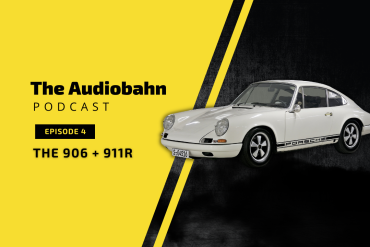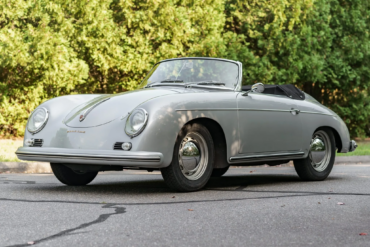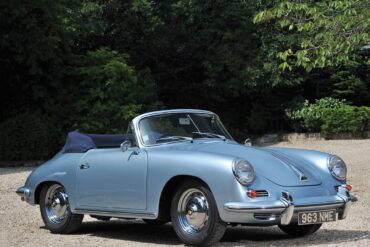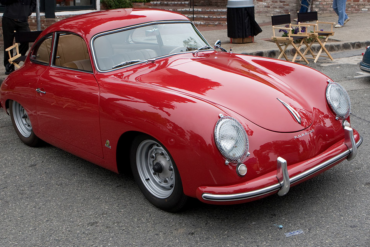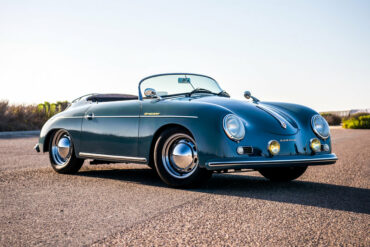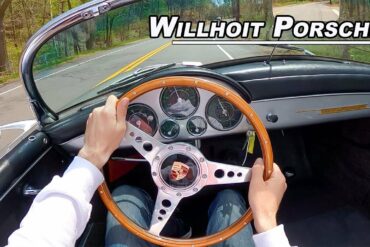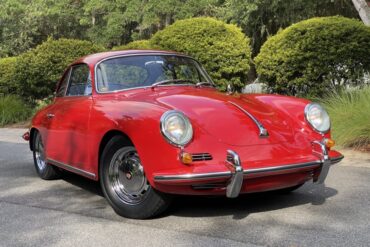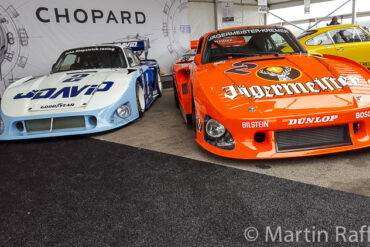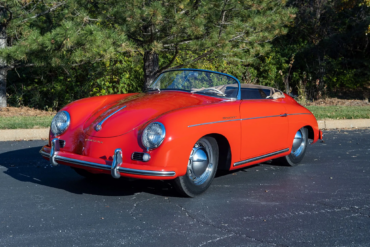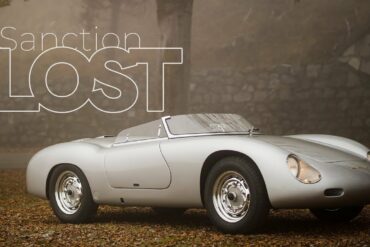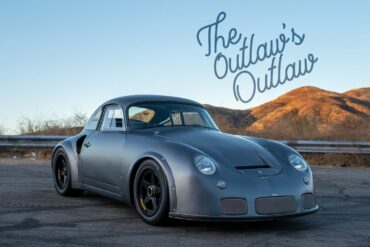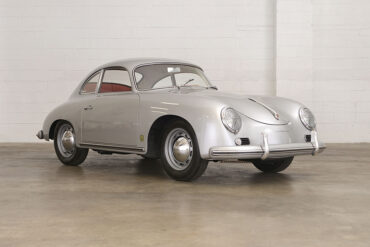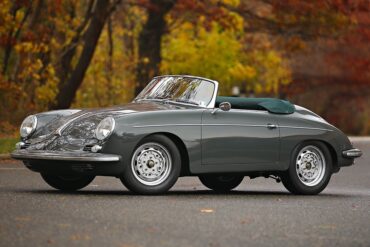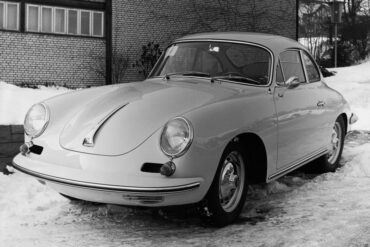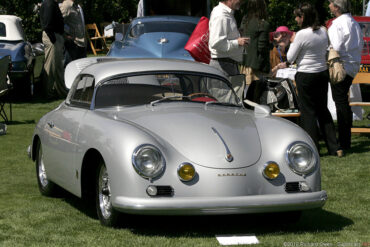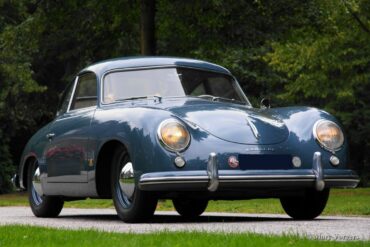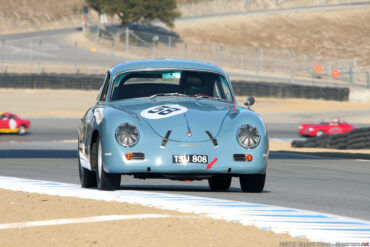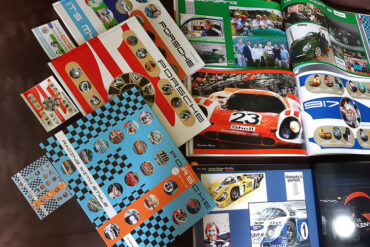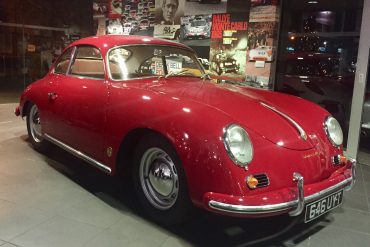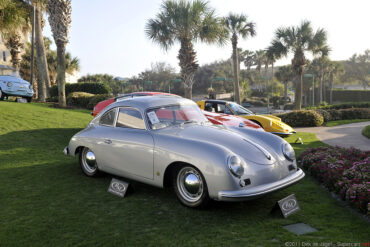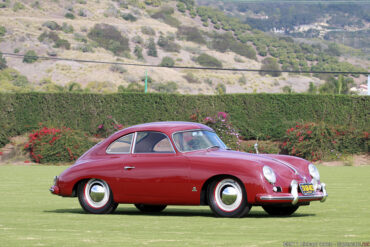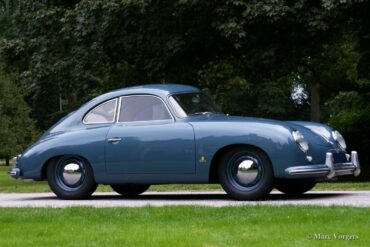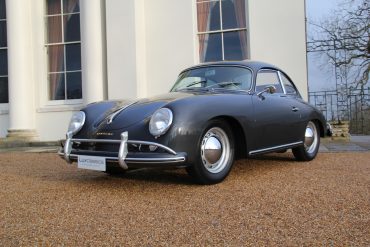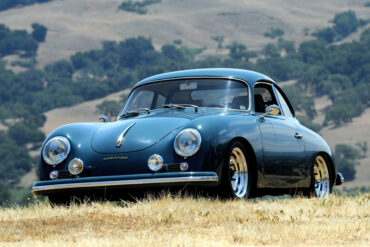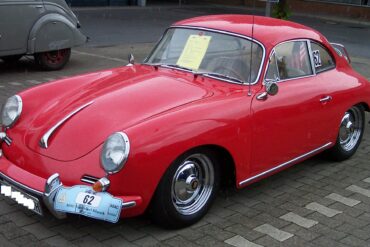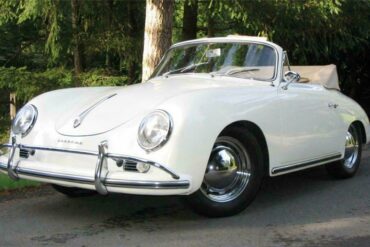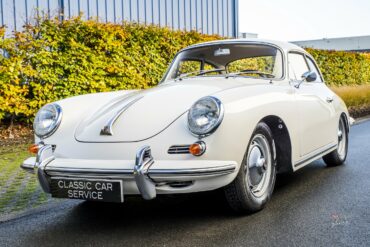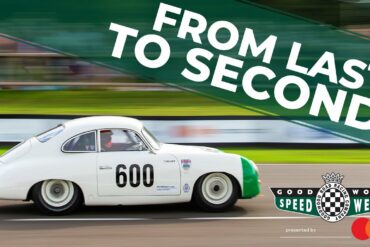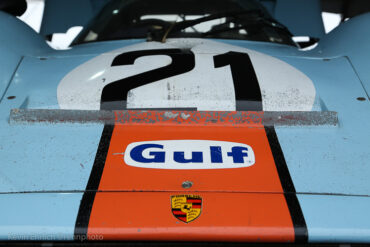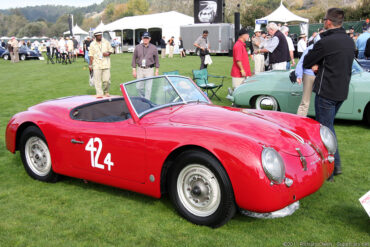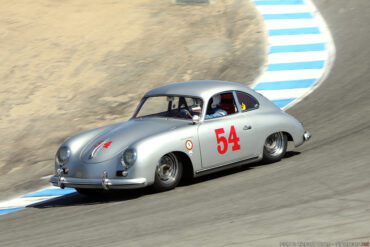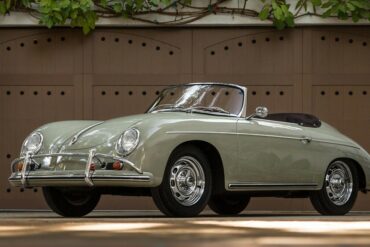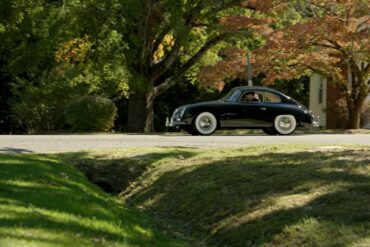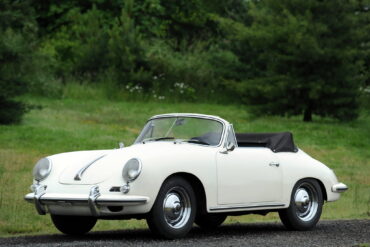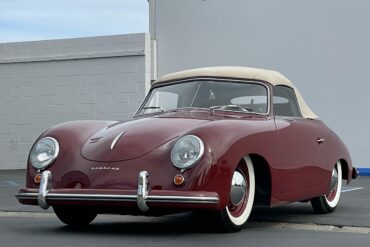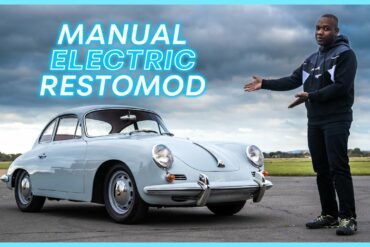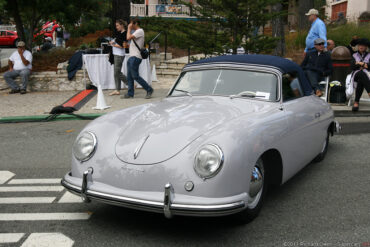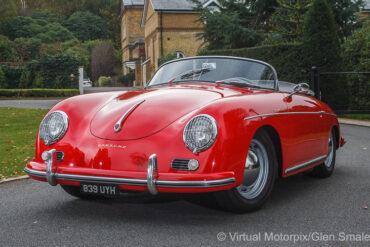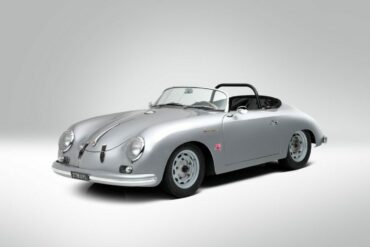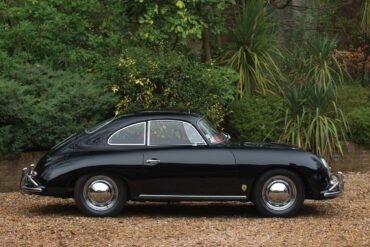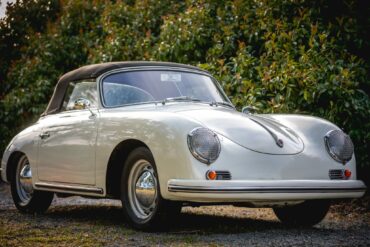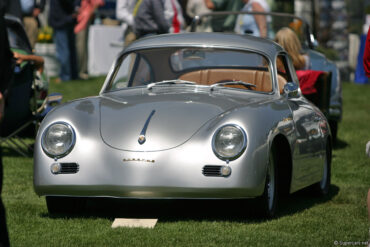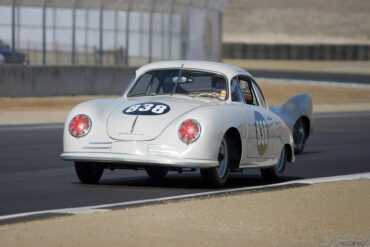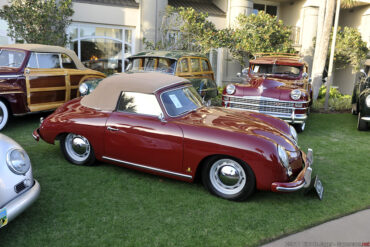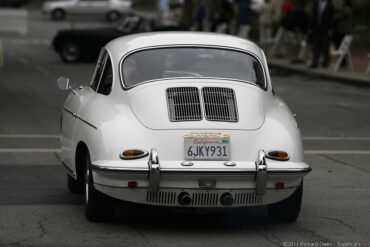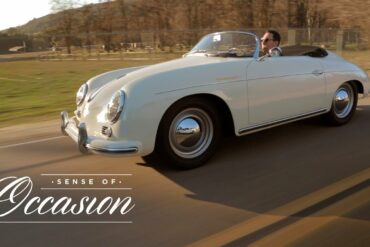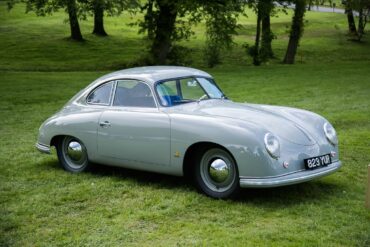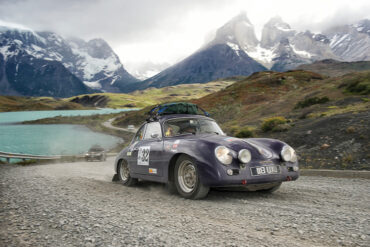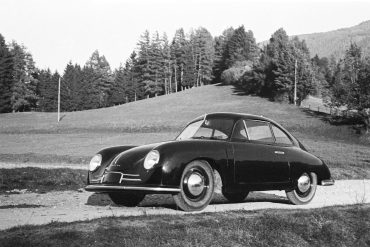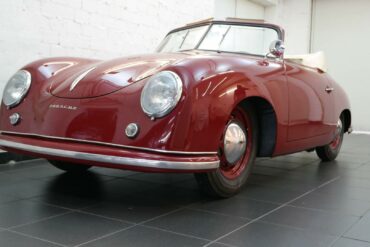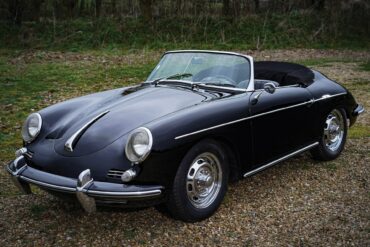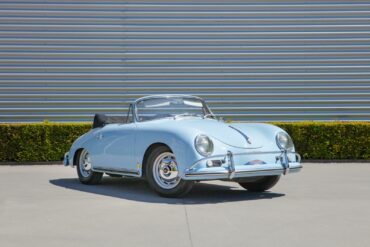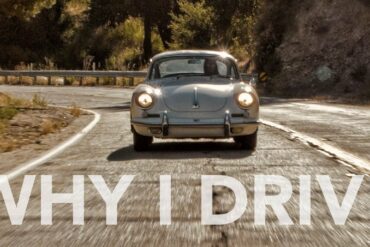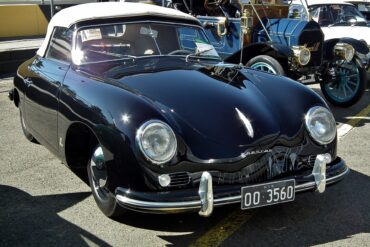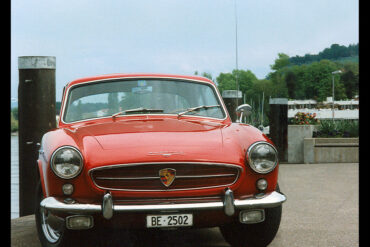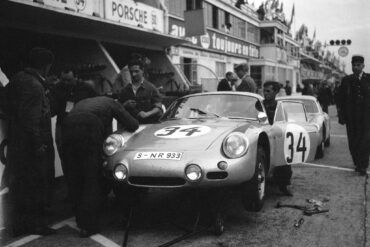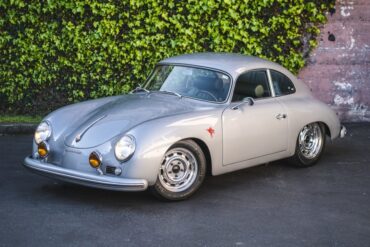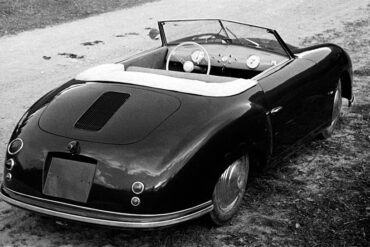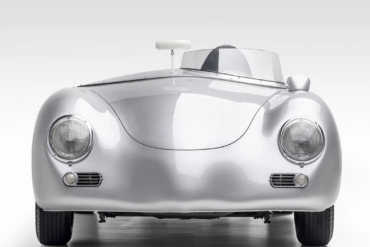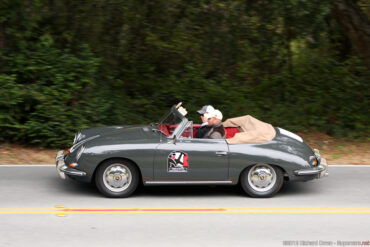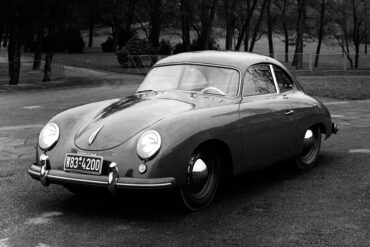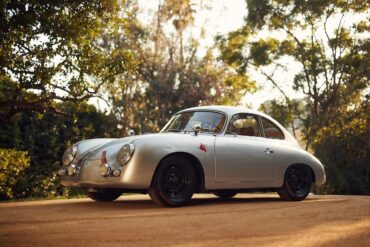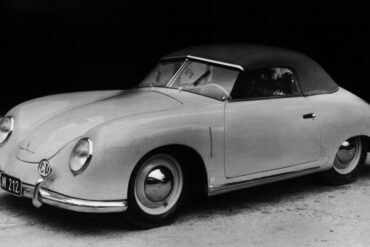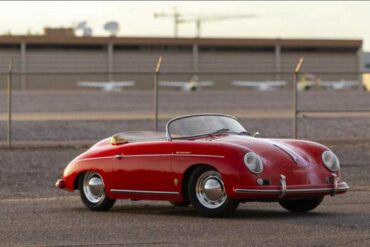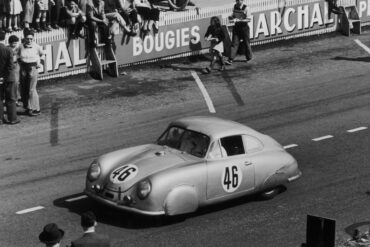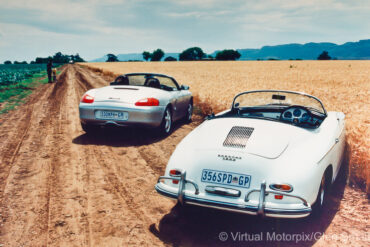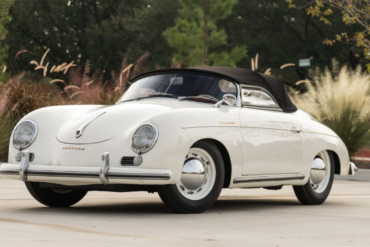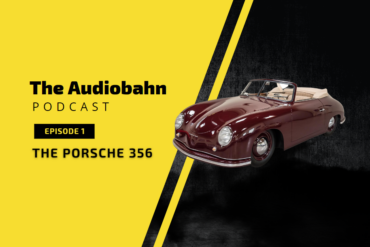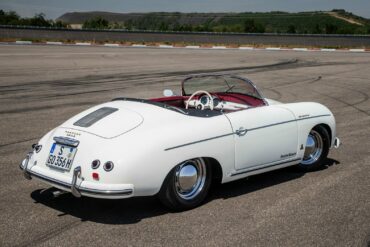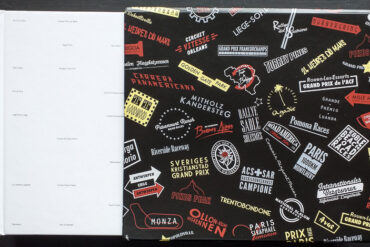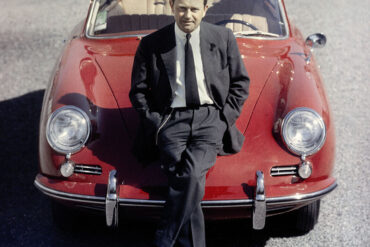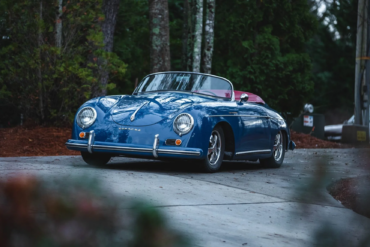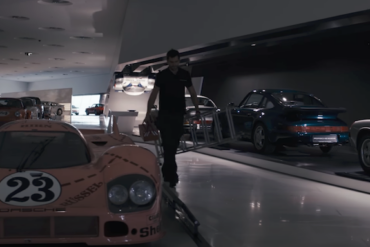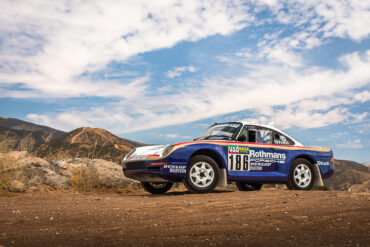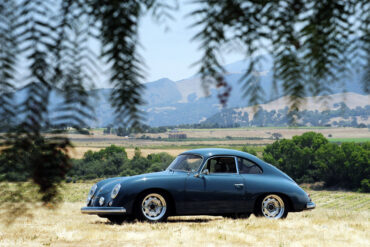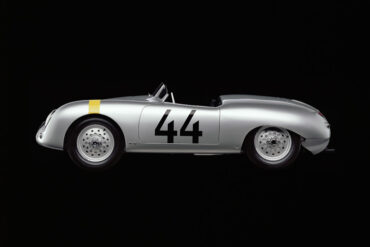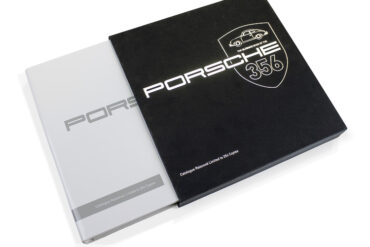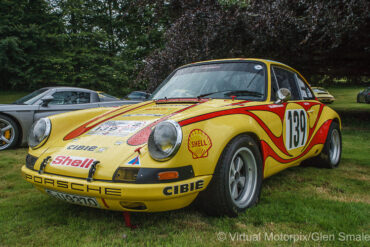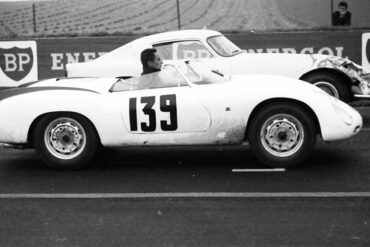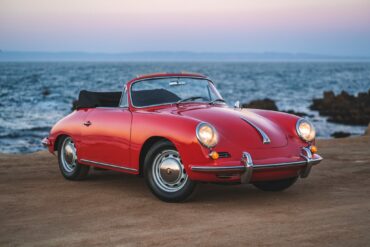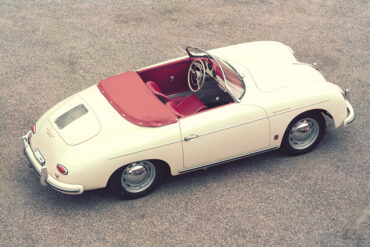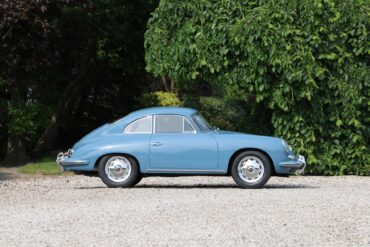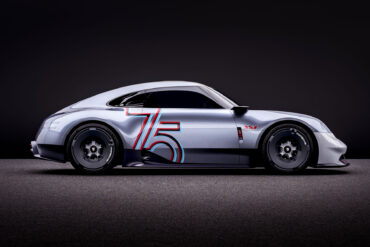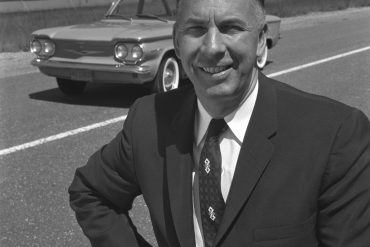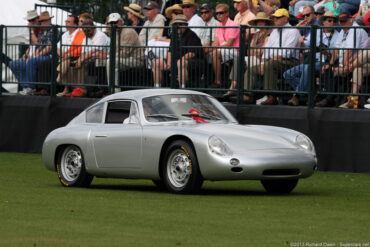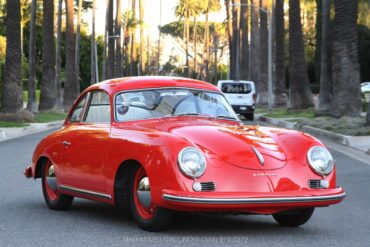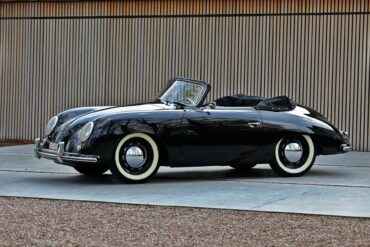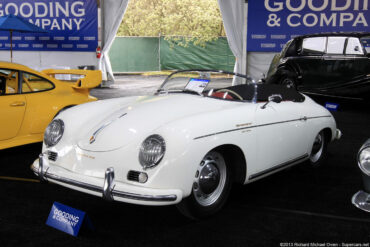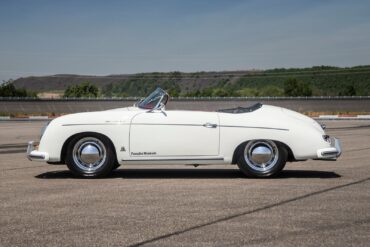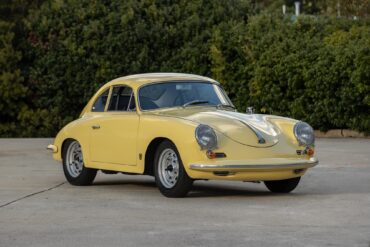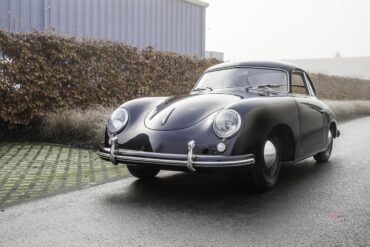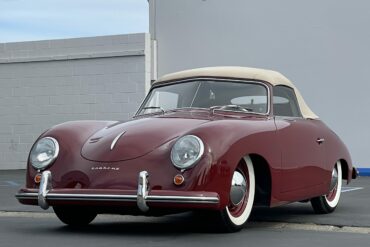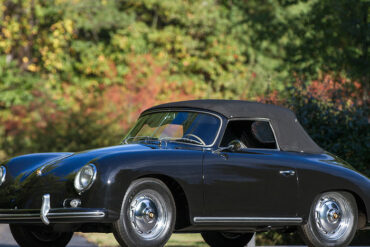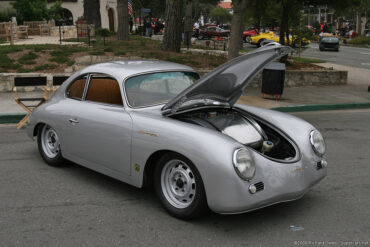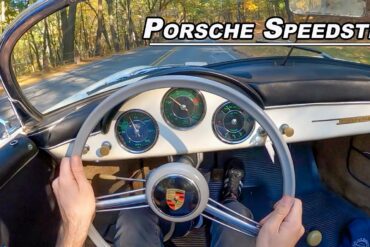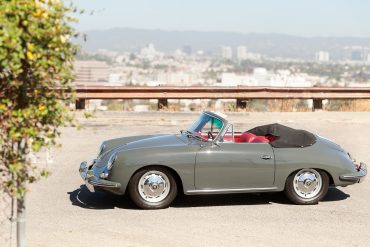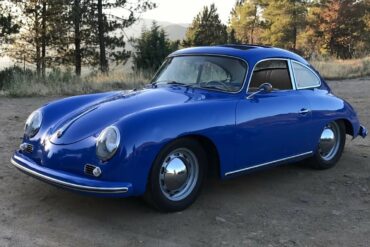Episode Four: The Porsche 906 & 911R Welcome to The Audiobahn, the Stuttcars.com podcast focused on all things Porsche. In our...
Produced in 1959 only, the Porsche 356 Convertible D was the replacement for the 356 A Speedster. In many ways this reflected...
1959 – 1963 Porsche 356B/1600 S Cabriolet Pictures & Gallery ...
1953 – 1955 Porsche 356/1500 Super Coupe (Pre-A) Technical Specifications Type Series Production Car Production Years 1953 – 1955 Built...
1956 – 1959 Porsche 356A/1600 Super Speedster Pictures & Gallery...
POV Drive In An 1800cc Twin Plug 356A Speedster Sit back, turn up the volume and enjoy...
1964 – 1965 Porsche 356 C 1600C Coupe Technical Specifications Model Years 1964 – 1965 Built At Stuttgart, Germany Engine...
Rennsport Reunion poster collection, from Rennsport I through VI It’s hard to know where to begin when writing a report...
Bring A Trailer is currently offering a 1955 Porsche 356 Pre-A Speedster equipped with a 1,500cc air-cooled flat-four engine. In...
Porsche 356 Carrera Speedster Zagato Please turn on closed captions to enjoy this film in English. Zagato is turning 100 years...
They call it the 356 RSR Rod Emory’s parents brought him home from the hospital in a hot-rodded short wheelbase...
1956 – 1959 Porsche 356A/1600 Coupe Technical Specifications Production Years 1956 – 1958 Released At 1955 Frankfurt Motor Show Built...
1959 – 1963 Porsche 356B/1600 Roadster Technical Specifications Type Series Production Car Production Years 1959 – 1963 Built At Stuttgart,...
After a considerable absence of a Carrera model in the 356 model lineup, Porsche finally made another version with the introduction of a 2.0-liter engine. As with the earlier versions, the Carrera was offered both in a Carrera GT Deluxe version for the road and the Carrera GT for racetrack duties. Unlike these earlier models, the new car benefited from the 2.0 liter engine introduced as the Carrera 2 in September 1962.
A handful of push-rod 356As were delivered from the factory with a lightweight package that was usually reserved for the Carrera race cars. Called GTs, these got the stripped out interior, aluminum doors, a large fuel tank and Porsche ATE disc brakes. As few as four Speedsters came equipped this way. Since the four-cam was only a marginal improvement in power, the regular 1600 Super was more than enough for the small car.
1959 Porsche 356A/1600GS Carrera de Luxe Coupé Pictures & Gallery...
1953 – 1955 Porsche 356/1500 Super Coupe (Pre-A) Pictures & Gallery ...
1958 – 1959 Porsche 356A/1600GS Carrera GT Coupé Pictures & Gallery...
Racing Porsche with Style © Stéphane Coradi This is Stéphane Coradi’s third publication, and the third of his books that...
Back in 2012 I found a car in Tuscon Arizona, it was a 1958 Porsche 356A T2 coupe. It was...
1952 – 1955 Porsche 356/1500 Coupe (Pre-A) Technical Specifications Type Series Production Car Production Years 1952 – 1955 Built At...
1952 – 1955 Porsche 356/1500 Coupe (Pre-A) Pictures & Gallery...
Towards the end of 1951 Porsche introduced a larger version of the flat four engine. It was offered alongside the original 1.1 litre engine. It took a lot more effort to develop the third variation on the four cylinder theme; the '1500.' Introduced in the 356 1500 during 1952, the engine produced 55 bhp. Porsche's competition department reworked the 1500 engine with hotter cams and bigger Carburetors, boosting power to 70 bhp. In 1952 this engine found its way into a new road car; the 356 Super.
From the outside, the 356A kept to the Porsche mantra of stepwise evolution. The new model was outwardly identical to the previous version except for the wider tires, a small rub-strip below the doors, a fully-curved front window and enamel paint replacing lacquer previously used. The 356 A came with an all-alloy air-cooled Flat 4 engine in four states of tune, with the 1300 having Type 589/2 engine with 60 bhp and 65 lb-ft of torque.
1956 – 1957 Porsche 356A/1300 Coupe Technical Specifications WHAT BODY STYLE? 2 door fixed-head coupé with 2+2 seats HOW LONG?...
1956 – 1959 Porsche 356A/1600 Super Coupe Technical Specifications Model Year 1956 – 1959 Built At Stuttgart, Germany Body Stylist...
1959 Porsche 356A/1600GS Carrera de Luxe Cabriolet Pictures & Gallery...
1961 – 1963 Porsche 356B/1600 Notchback Coupe Technical Specifications Type Series Production Car Production Years 1961 – 1963 Built At...
8 minutes of Porsche 356 goodness British Touring Car runner-up Sam Tordoff had quite the time in the Fordwater Trophy...
Gulf Porsche chassis 917-016 Under the welcoming embrace of sunny California skies over wine country, the Sonoma Speed Festival established...
1952 Porsche 356 ‘America Roadster’ Pictures & Gallery...
1955 Porsche 356/1500 Continental Coupe Pictures & Gallery...
1959 Porsche 356A/1600 Super Convertible D Pictures & Gallery...
Join Road Scholars’ Cam Ingram and Udo Reisinger as they take the 1958 Porsche 356A Coupe on its final post...
1959 – 1963 Porsche 356B/1600 Super 90 Cabriolet Pictures & Gallery ...
1951 – 1953 Porsche 356/1300 Split-Window Cabriolet (Pre-A) Pictures & Gallery...
Electric Porsche 356 Review: An EV For Petrolheads! The Electrogenic 356 is no ordinary Porsche restomod. This one might look...
Porsche – The Golden Years: Leonardo Acerbi © Virtual Motorpix/Glen Smale It is always a pleasure when a top-quality book...
1952 – 1955 Porsche 356/1500 Cabriolet (Pre-A) Pictures & Gallery...
1957 Porsche 356 A Speedster – looking chocolate box pretty! It was Max Hoffman, the New York-based Porsche importer, who...
Despite looking outwardly similar to the preceding models, Porsche thoroughly updated their 356 line in 1956 and called their new model the 356A. At the core, this included a larger 1600 cc engine, but also a curved-glass windshield and a thoroughly revised suspension. At the 1955 Frankfurt Motor Show in September of 1955, Porsche released the 356A/1600 to the world with cabriolet, coupe and speedster bodies from Reutter. The 356A/1600 was a great performer, good for a sprint to 60 mph in 13.5 seconds and hit a top speed of 109 mph.
1956 – 1959 Porsche 356A/1600 Super Coupe Pictures & Gallery ...
1956 – 1957 Porsche 356A/1300 Super Cabriolet Pictures & Gallery...
Following the Pre-A prototypes and a run of quad-cams with the 1500cc engine, the 1600 Carrera GT was a performance 356 that used a larger version of the Porsche 550 Spyder's potent engine. As early as 1958, some Carreras were fitted with a larger engine known as the Type 692. The new unit featured a larger displacement which was better suited for the 1600cc class. Furthermore, it was improved considerably adopting plain bearings and new ignition system.
Porsche 356/2 Gmünd Coupé Pictures The rare 356/2 aluminum bodied Porsche Gmünd Coupes are some of the most stunning Porsche case ever...
1952 – 1955 Porsche 356/1500 Cabriolet (Pre-A) Technical Specifications Type Series Production Car Production Years 1952 – 1955 Built At...
1962 – 1963 Porsche 356B/2000GS Carrera 2 Coupe Technical Specifications Type Series Production Car Built At Germany Engine Type 548...
A Drive In A 1956 Porsche 356A T1 Speedster Starting any classic car is special. There is the sensation that...
1950 – 1951 Porsche 356/1100 Split-Window Coupe (Pre-A) Technical Specifications Type Series Production Car Production Years 1950 – 1951 Built...
Molly ready for the Peking to Paris rally in 2007 © David & Julie Harrison She was manufactured in 1958,...
With lessons learned from 356 No. 1, Porsche developed the 356/2 as a production-ready version. The biggest concession to useability was repositioning the engine back behind the rear wheels as the original VW design. Like 356 No. 1, 356/2 was built as two-seat roadster using VW parts.
1954 – 1955 Porsche 356/1300 Super Cabriolet (Pre-A) Pictures & Gallery ...
1961 – 1963 Porsche 356B/1600 Super 90 Roadster Technical Specifications Type Series Production Car Production Years 1959 – 1963 Built...
Mid-Atlantic American Sports Car Races 1953-1962: by Terry O’Neil © Dalton Watson Fine Books This is the beginning of a...
1954 – 1955 Porsche 356/1300 Super Cabriolet (Pre-A) Technical Specifications Type Series Production Car Production Years 1954 – 1955 Built...
We Love This 1964 Porsche 356 Why does Catherine Sutton drive? Because looking after her car is a choice, not...
In 1953, the 1300 S or "Super" was introduced, and the 1,100 cc engine was dropped. The 360 1300 Super boasts a power improvement to 60 BHP with Porsche's "Super" engine in the Porsche 356 model range. Minor visual differences were implemented such as front indicators integrated with the horn grilles and bumpers protrude from the body with over-riders. In June 1954, the plain-bearing 1300cc engine switched over to the same block as the 4cc larger roller-bearing variant.
Ferry Porsche had in fact requested Swiss technicians to make a less sporty and more elegant version of the 365 B and thus the 1600 Beutler Coupè was born. This project is a 2+2 based on a Porsche 1600. Like the Porsche, the car is built on a VW platform, but includes Porsche elements such as the brakes and the engine. It was built in 5 copies before production was stopped in 1957 due to a change in commercial strategies by the German company.
In keeping with FIA regulations, Porsche created a new lightweight 356 with help from Abarth. After Porsche had considered numerous Italian companies to manufacture a lightweight 356 body, they settled on Abarth. Franco Scaglione penned the first initial drawings which attempted to reduce frontal area, overall height. Included was an adjustable scoop on the rear deck lid. Made entirely of aluminum, Abarth's body was smaller than the Reutter 356.
From the outside, the 356A kept to the Porsche mantra of stepwise evolution. The new model was outwardly identical to the previous version except for the wider tires, a small rub-strip below the doors, a fully-curved front window and enamel paint replacing lacquer previously used. The 356 A came with an all-alloy air-cooled Flat 4 engine in four states of tune, with the 1300 having Type 506/2 engine with 44 bhp and 60 lb-ft.
Porsche 356/2 Gmünd Cabriolet Pictures Of the 50 cars made in Gmünd, only eight were built up as cabriolets. Each...
It’s really hard not to love this Porsche 356 A Carrera Speedster! Photo Credit: Ted7 (@iamted7)...
1964 – 1965 Porsche 356 C 1600C Cabriolet Pictures & Gallery...
The 1500 was Porsche’s newest engine which was quickly fitted with 40 PIBC Solex carburetors to produce 60 bhp @ 5000 rpm in 1952. These retained the Hirth roller-bearing crankshafts which gave Porsche enough clearance to enlarge their engine to 1500cc. Most cars from 1952 until the 356A of 1956 were powered by the 1500 engine but some left the factory with the smaller 1.1 and 1.3-liter engines. At the request of American importer Max Hoffman, 356s for the 1955 model year were badged as Continentals before reaching the U.S
Emory Motorsports is a company that makes the best Porsche “Outlaw” cars. The attention to detail is stunning and there...
1954 – 1955 Porsche 356/1300 Split-Window Cabriolet (Pre-A) Pictures & Gallery...
1956 – 1957 Porsche 356A/1300 Super Speedster Pictures & Gallery...
In 1950, eleven remaining Gmund chassis were assembled after the factory returned to Germany and converted to SL (Sport Leicht) racing specification. They received 1,086-cc engines, enlarged fuel tanks, louvered quarter-window covers, wheel spats, streamlined aluminum belly fairings, and a pedestal-mounted shifter. Three Type 356/2 cars raced at Le Mans in 1951; two crashed, but 356/2-063 performed flawlessly, winning the 1,100-cc class.
A 1997 Porsche Boxster (left) and a 1958 Porsche 356 A Speedster (right) The day dawned bright and clear with...
Generally speaking the early models or so called ‘Pre A 356′ models are more desirable than the later models. At the top of the pyramid and the most exclusive is the Carrera version which carries the legendary 4 cam ‘Fuhrman’ engine. But just below that comes the ‘Super’ speedster. The ‘super’ version had more horsepower (75 vs the standard 60) and the powerful ‘type 528 engine’ for the 1500 Super version.
Episode One: The Porsche 356 Summary Welcome to The Audiobahn, the Stuttcars.com podcast focused on all things Porsche. In our first...
1954 – 1955 Porsche 356/1500 Speedster Technical Specifications Type Series Production Car Built At Stuttgart, Germany Body Stylist Erwin Komenda...
SportErfolge: by Tony Adriaensens – page photographs by © Virtual Motorpix/Glen Smale Simply titled, SportErfolge (English: Success in Sport), this...
The Porsche 356 Story Porsche engineering company had designed cars for other companies for a long time, but it was...
Live now on Bring A Trailer is fantastic example of a 1955 Porsche 356 Speedster finished in Oslo Blue over...
Enjoy a close-up experience of the history of Porsche at the Porsche Museum, at night when the museum comes alive!...
Porsche 911s on track at the Porsche Experience Centre Atlanta (Courtesy of the Porsche Experience Centre Atlanta) RM Sotheby’s, in...
1954 – 1955 Porsche 356/1300 Super Coupe (Pre-A) Pictures & Gallery...
Successful VW Dealer and racer Walter Glöckler built several specials for the German Car Championship including this roadster. It was built with assistance from Porsche in Zuffenhausen and raced without its optional hardtop in the 1952 champion before being shipped overseas for SCCA racing. Weidenhausen created the body from aluminum with a nose that bore close resemblance to the 356 Porsche but had semi-skirted rear wheels and cutaway rear corners similar to Glockler-Porsche 1 and 2.
The Ultimate Book of the Porsche 356 by Brian Long © Veloce Publishing Limited Brian Long’s original book on the...
Rennsport Collective, Donington Hall, 20 July 2019: Porsche 996 GT1 Evo 1997 on display with numerous other Porsche classics They...
The original Porsche Carrera Zagato Speedster, the first Zagato bodied Porsche of the brand’s history, was built in 1958 for French gentleman driver and expert Porsche pilot Claude Storez, one of the best French pilots of that time. He started his career in early 50s and became soon a skilled pilot. In late ’57 he was looking for the “ultimate” 356 for the 1958 races season. He put an order to Porsche AG for a 356 A Speedster (the lightest version available) with a Carrera engine and GS specs (the most powerful at that time).
1964 – 1965 Porsche 356 SC Cabriolet Pictures & Gallery ...
1956 – 1958 Porsche 356A/1600 Speedster Technical Specifications Production Years 1956 – 1958 Released At 1955 Frankfurt Motor Show Built...
1956 – 1957 Porsche 356A/1300 Super Coupe Pictures & Gallery...
Remembering Porsche’s first model, the 356 Seventy-five years ago, on June 8, 1948, the 356 No. 1 Roadster became the...
People usually recall the Chevrolet Corvair as the car that was “unsafe at any speed” which is rather unfair because...
1960 – 1961 Porsche Abarth 356B Carrera GTL Pictures & Gallery...
1954 – 1955 Porsche 356/1300 Split-Window Coupe (Pre-A) Technical Specifications Type Series Production Car Production Years 1954 – 1955 Built...
1953 – 1955 Porsche 356/1500 Super Cabriolet (Pre-A) Pictures & Gallery...
1956 – 1958 Porsche 356A/1500GS Carrera Speedster Pictures & Gallery...
Porsche 356 Production & Chassis Numbers (1950 – 1965) The evolution of the 356 was constant throughout its production history....
For decades, Porsche has established itself as a renowned car manufacturer, celebrated for its adaptability and agility. It has consistently...
1952 – 1954 Porsche 356/1100 Coupe (Pre-A) Pictures & Gallery...
1956 – 1957 Porsche 356A/1300 Cabriolet Pictures & Gallery...
1956 – 1959 Porsche 356A/1600 Super Cabriolet Technical Specifications Model Year 1956 – 1959 Built At Stuttgart, Germany Body Stylist...
1957 – 1958 Porsche 356A/1500GS Carrera GT Coupé Pictures & Gallery...
POV Drive In 356A Speedster This 1956 Porsche 356A Speedster is completely original and unrestored making it incredibly rare. It...
1959 – 1963 Porsche 356B/1600 S Cabriolet Technical Specifications Type Series Production Car Production Years 1959 – 1963 Built At...
1956 Porsche 356A is a “Sunroof Coupe” This 1956 Porsche 356A is a “Sunroof Coupe” that has been owned by...


